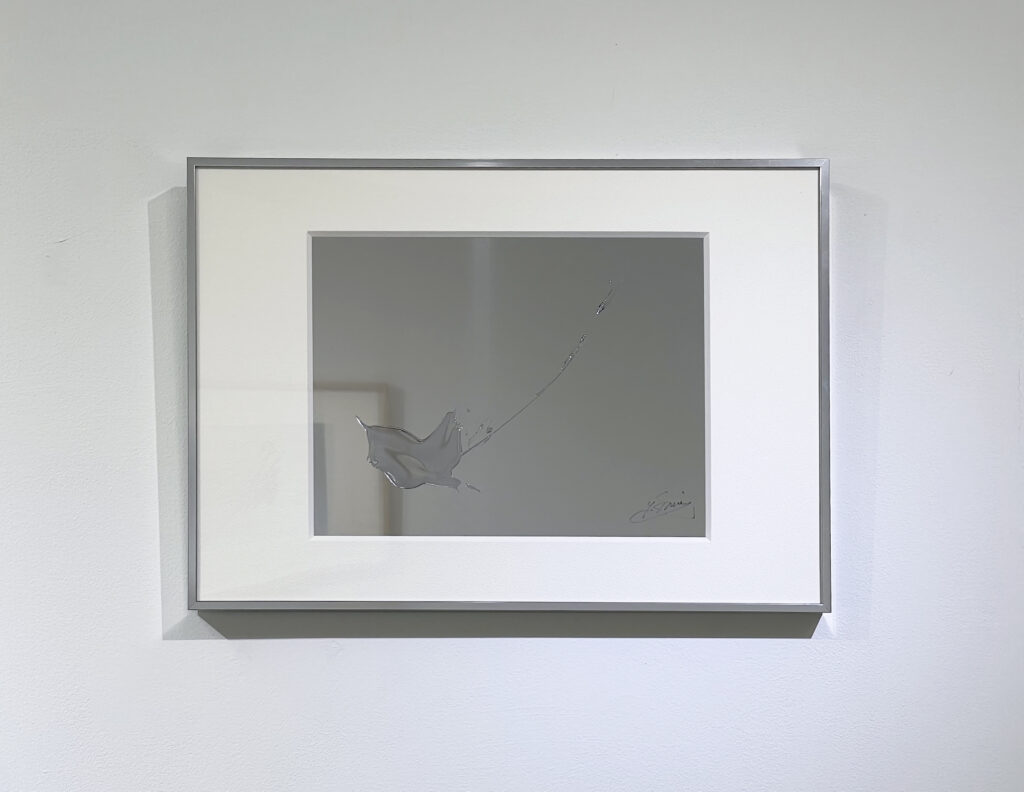


The Transparent Calligraphy by Yoko Emi
Artist Info透明の書 江見 容子
会期 2025年4月19日(土)〜 5月24日(土)
時間 12時〜19時 【予約制】
休廊 日・月・祝日 5月15日(木)〜 19日(月)は休廊
場所 北井画廊
「透明の書」 江見 容子
話した言葉は目に見えない。その言葉を文字で書いたとしてもその気配までを伝えることは容易ではない。
視覚芸術は視覚によって認識できるような表現形式であり、書は元来、情報の伝達手段として文字を書くことから始まっている。江見容子の「透明の書」は、表現したいことを、多くはそれが該当する文字から発想した造形にするこれまでの現代の書表現に、彼女独自の要素を加えたものだ。作品の画面には墨やアクリル絵の具のみならず、樹脂等で書かれた立体的な透明な部分が大なり小なり含まれる。その透明な部分は、何かを伝えようとする時に意識下では認識せずとも間違いなく存在する気配のような部分である。人が言葉や文字で何かを伝えようとする時に、言葉や文字だけでは伝えきれない部分までも可視化しようと試みるのが彼女の「透明の書」だ。
支持体は水分を通さない合成紙やアクリル板、アルミニウム、ステンレス等を用いている。支持体に映る鑑賞者や景色の中に浮かぶ「透明の書」は、言葉や文字の持つ伝達手段の限界を広げようとしている。文・北井画廊
The Transparent Calligraphy| Yoko Emi
19 April – 24 May, 2025
Gallery hour 12:00 – 19:00 *Please make an appointment.
Closed on Sun. Mon. Holidays
Venue Gallery KITAI
“Transparent Calligraphy” – Yoko Emi
Text by Gallery Kitai
Spoken words are invisible. Even when transcribed into written language, the subtle presence or nuance behind those words often eludes capture.
Visual art, by its nature, is a form of expression perceptible to the eye. Calligraphy, in its origins, began as a means of transmitting information through written characters. Yet in the hands of Yoko Emi, it becomes something far more layered and evocative.
Her series “Transparent Calligraphy” builds upon contemporary approaches that often transform written characters into visual forms derived from their semantic roots. But Emi introduces her own distinct vocabulary—an added dimension that transcends the written word.
In each work, alongside traditional ink and acrylic paint, she incorporates transparent, three-dimensional elements made from resin and other materials. These translucent components are not merely decorative—they represent the intangible aura that surrounds communication: the unspoken, often unconscious presences that accompany the act of conveying meaning.
With “Transparent Calligraphy,” Emi seeks to visualize what language alone cannot express. Her work gestures toward the ineffable—those layers of intention, emotion, and atmosphere that resist being pinned down by words or characters.
Her chosen surfaces—synthetic paper resistant to moisture, acrylic panels, aluminum, stainless steel—further her exploration. These materials reflect the viewer and their surroundings, allowing the transparent calligraphy to hover between presence and absence. In doing so, Emi expands the possibilities of language as a medium, pushing the boundaries of what communication through text and image can achieve.
